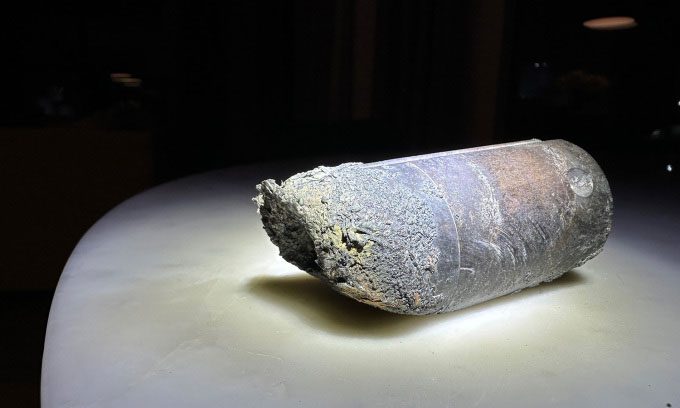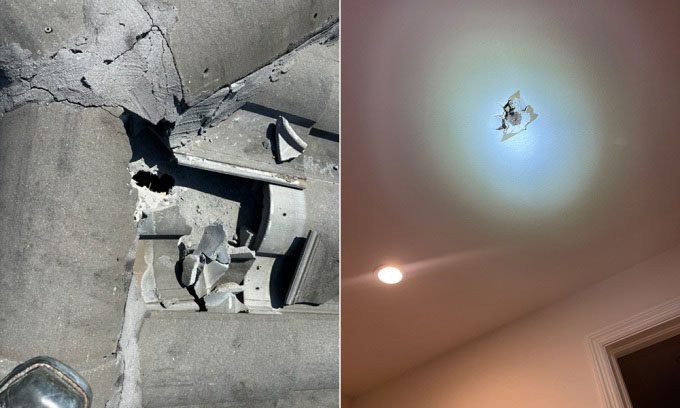On April 2, NASA announced that they are analyzing an object that fell from the sky and struck a home in Florida, likely debris from the International Space Station (ISS).
Alejandro Otero, a resident of Naples, Florida, posted on social media platform X that an object had “pierced the roof and crashed through two floors of his house,” nearly hitting his son at 2:34 PM on March 8. The object is a cylindrical tube a few inches long (1 inch is approximately 2.5 cm) and weighs about 0.9 kg. The origin of the object has not been determined, but Otero believes it may be one of nine depleted batteries discarded from the ISS.

The object that fell on Alejandro Otero’s house, a resident in Florida, USA. (Photo: X/Alejandro Otero).
Earlier, on the same day, a supply rack containing batteries from the Japan Aerospace Exploration Agency (JAXA) re-entered Earth’s atmosphere above the Gulf of Mexico. This debris was ejected from the ISS in 2021, and it was initially predicted that it would burn up during re-entry. However, it appears that a piece of debris managed to survive this process.
Otero has turned over the object that struck his home to NASA. “NASA is working with the homeowner to collect the object and will analyze it at NASA’s Kennedy Space Center in Florida as soon as possible to determine its origin,” Joshua Finch, a NASA spokesperson, told the scientific publication Live Science on April 2. Once engineers determine the origin of the object, Otero may seek compensation for the repairs to his house, but this process could become complicated if the object belongs to JAXA.

Space debris pierced a residential house. (Photo: X/Alejandro Otero)
Florida is not the only place to be struck by space debris. Four pieces of the Long March 5B rocket from China fell over Côte d’Ivoire, Borneo, and the Indian Ocean between 2020 and 2022. In 2021 and 2022, debris from SpaceX rockets fell on farms in Washington state and another farm in Australia.
Space agencies around the world are working to track more than 30,000 of the largest pieces of space debris, but many other pieces are too small to monitor. Scientists have proposed various measures to clean up the area around Earth, such as collecting debris with nets, robotic arms, or launching a long tether from another spacecraft to capture debris.




















































